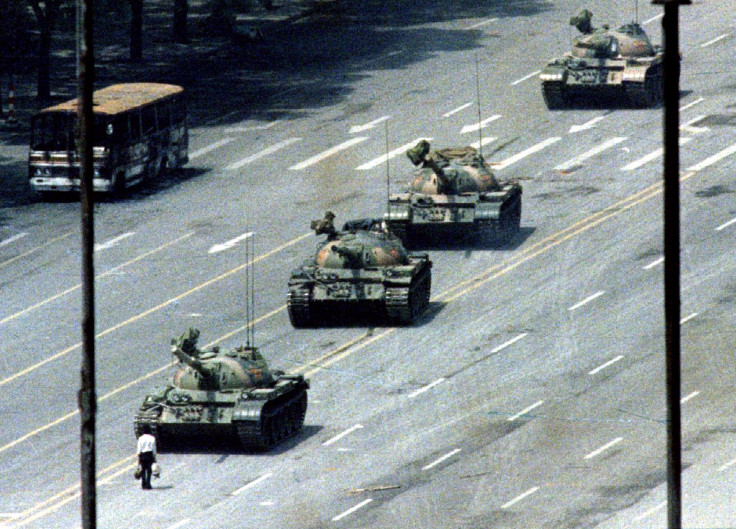Pompeo Tries To Provoke China By Meeting With Survivors Of 1989 Tiananmen Square Massacre

US Secretary of State Mike Pompeo met with Wang Dan, Su Xiaokang, Liane Lee, and Henry Li on Tuesday (June 2). The three men and one woman are survivors of the Chinese Tiananmen Square Massacre of June 4, 1989.
The 31-year-old stand-off between protesters and the People’s Liberation Army (PLA) came to pass after the death of liberal icon Hu Yaobang, a high-ranking Communist Party official whose views calling for democratic reforms often clashed with those of Chinese leaders. The 1989 protests came to a brutal end when PLA tanks rolled through Beijing to put down the unrest by force. An unknown number of people were killed.
The lasting image of the Tiananmen Square protest is the “Tank Man” standing alone in defiance and blocking a column of tanks. The incident remains a sensitive subject for the Chinese government to this day.
State Department spokesperson Morgan Ortagus gave a statement about the closed-door meeting with Pompeo. The statement read, “We mourn the victims of June 4, 1989, and we stand with the people of China who continue to aspire to a government that protects human rights, fundamental freedoms and basic human dignity. "
"Thirty-one years later, the total number of missing or dead Tiananmen protesters is still unknown. We reiterate our call for a full, public accounting of those killed or missing.”
Later, the details of the meeting were disclosed. Pompeo’s only significant contribution was to ask, “What can we do to help China have democracy?” according to Wang, who called upon the Trump administration to raise issues around human rights like improving labor laws and relaxing internet regulations in future trade talks with Beijing.
Some, like Rob Berschinski, a former State Department official who served as deputy assistant secretary of state for democracy, human rights and labor during the Obama administration, were quick to use the Pompeo meeting as political fodder. He said, “The hypocrisy of Secretary Pompeo meeting with those [Tiananmen] survivors within this particular 24 hours is obvious”
The “24 hours” Berschinski was referring to is the Trump administration’s response to the protests following the death of George Floyd at the hands of the police in Minneapolis. Trump, speaking from the Rose Garden on Monday evening, vowed that he would deploy the military in cities around the country to quell the violence that has accompanied the protests.
Later, police fired pepper spray at nonviolent protesters in a square just north of the White House. Critics of Trump say the actions were to clear a path for the president to walk to a nearby church and pose for cameras holding a Bible.
Berschinski compared Trump’s willingness to use military force aimed at silencing protesters to the Chinese military's actions against the 1989 Tiananmen Square protesters. He provided an answer to Pompeo’s one question about helping China achieve democracy by saying, “The way I would rectify this situation seems to be the way the administration is not going to rectify it,” he said. “Which is to lead by example at home.”
A 1990 interview that Trump gave to the Playboy magazine offers clues into Trump's thinking on how he would handle the unrest over the killing George Floyd, and those are remarkably similar to how China handled the 1989 unrest. Excerpts from the interview included Trump saying, “Then they [the Chinese military] were vicious, they were horrible, but they put it down with strength. That shows you the power of strength. Our country is right now perceived as weak … as being spit on by the rest of the world.”
In Trump’s world, approval by the international community and by those at home is less important than maintaining law and order by force, if needed, against criminal behavior.
In the U.S. protests, peaceful protesters may get caught in the crosshairs. In 1989 China, the peaceful protesters were the target of the PLA.
© Copyright IBTimes 2025. All rights reserved.





















